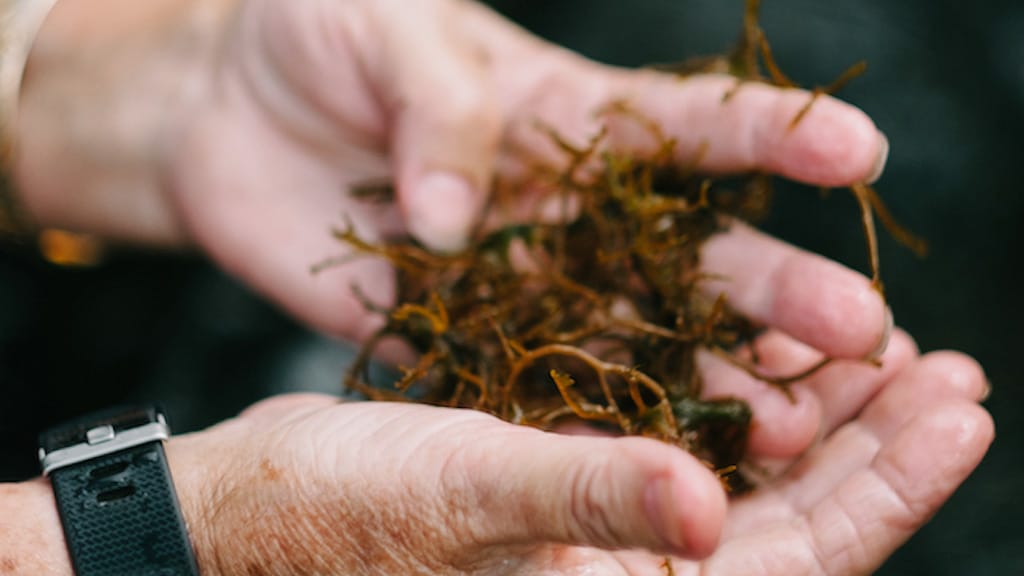Ogo is the catch of the day at Wai‘anae High School’s Marine Science Learning Center, where students practice aquaculture to save seaweed.
In the coastal town of Wai‘anae, almost everything is within a stone’s throw of the ocean. In 1990, this logistical convenience inspired an epiphany from high school teacher Susan Lum: What better spot for young minds to learn the sea-farming techniques of ancient Hawai‘i than a high school hugged up against the Pacific?
With funding from the state legislature and site-strategy assistance from Oceanic Institute, the Wai‘anae High School Marine Science Learning Center was built, complete with aquatic tanks and a saltwater well that taps seawater from the canal below the campus. Now, nearly three decades later, junior and senior students collaborate and problem-solve as they explore aquaculture, one of the most successful traditional Hawaiian practices.

At the learning center, students who have chosen marine science as their majors run saltwater, freshwater, and brackish water experiments year-round in the indooroutdoor lab and classroom facility. Dana Hoppe, the program coordinator, guides student-scientists through inquiry projects to test environmental variables that help the edible red seaweed known as Gracilaria parvispora, or ogo, thrive. While the students are also responsible for shrimp, mullet, and taro, ogo is the vital vehicle Hoppe uses to deliver her aquaculture curriculum.
Native to Hawai‘i and used in popular Hawaiian and Japanese dishes, this ogo— which is short for “ogonori,” the Japanese word for a large amount of “ocean moss”— makes a convenient study subject since it can reproduce asexually, or via vegetative propagation. At one point, the plant was so prolific in the learning center’s effluent water (the water recycled from the tanks back to the canal) that students were able to fund their field trips and workshops by selling it to stores and at farmers markets. But lately, warmer temperatures, overpicking, and pollution have left the ogo vulnerable to invasive seaweed.
“Having the invasives introduced has been a boon to the program because it gives the kids a drive and a goal,” Hoppe says. Now students have their brains trained on figuring out how to “bioremediate the seed stock,” or save the seaweed. In 2017, they removed a layer of sediment and plant life in one section of the canal, then reseeded it with ogo. Their hypothesis that the invasives would steer clear of the sandy bottom was spot on: The ogo grew unencumbered for two months. Though the invasives eventually returned, this year, students intend to redo the experiment and adjust a few variables in hopes of permanently impeding the unwanted growth.

Next, Hoppe will be teaching students how to take mullet through their larval stages so the center can start a capture and release program. “Wai‘anae—our name comes from the ‘anae, the full-grown mullet,” Hoppe says. “Just like the ogo, our waters used to be rich with mullet.”
Hoppe aims to have her charges leave the Marine Science Learning Center with a heightened sense of their roles as stewards of their coast, their community, and the world at large. In the process, they collectively improve the marine environment.
For more information, visit whsmarinescience.wixsite.com/mslc or @waianaemslc on Instagram.
